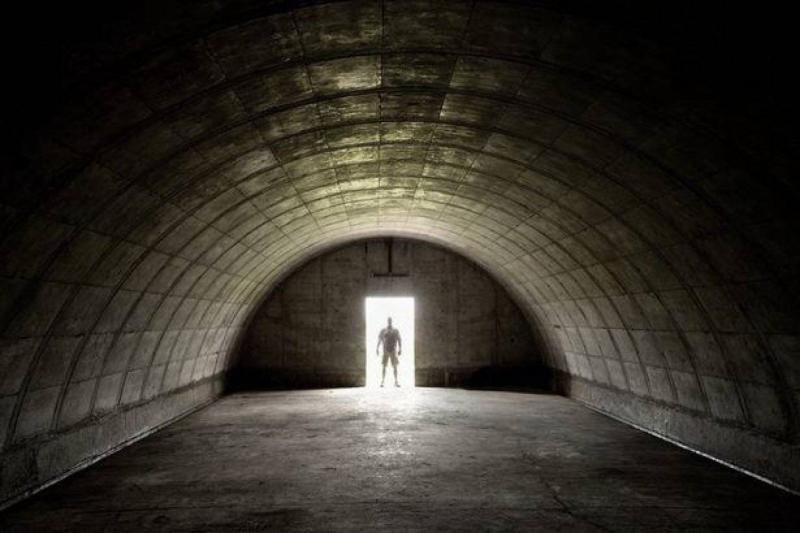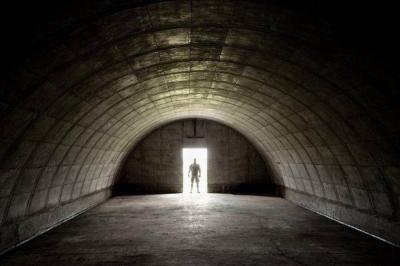As tensions and conflicts escalate in various parts of the world, shelter construction companies have developed their designs to meet the risks that may surround their inhabitants, making them more luxurious and suitable for long periods of stay, at costs reaching millions of dollars. The term "doomsday shelters" refers to fears of an impending apocalypse and the last hours of Earth's existence, prompting the construction of fortified shelters to withstand potential global disasters, including earthquakes, natural disasters, wars, and nuclear strikes. These shelters are built with pure steel and buried underground at depths exceeding three meters to protect occupants from bomb blasts.
Several countries are working on similar shelter models, such as Israel, the United States, Switzerland, Canada, Sweden, and others, which have already begun implementing them several years ago. According to the American company "Rising S," which has been in the shelter construction business for over 20 years, demand for its shelters has increased about tenfold since the Russian military entered Ukraine. The company sells shelters priced from $40,000 to over $8 million, depending on the features and number of rooms.
Developers of these shelters strive to create an underground environment that allows people to survive for extended periods by providing medical staff, teachers, classrooms, water gardens, clinics, wellness centers, and gyms.
#### What About Israel's Shelters?
Israel's "Civil Defense Law" mandates that all homes, residential buildings, and industrial establishments include bomb shelters to protect Israelis during air raid alerts, providing secure and fortified locations for refuge from incoming missiles. Since 1993, Israel has enacted a law requiring real estate investors to construct a fortified room known as a "Mamad."
There are three main types of shelters in Israel:
1. **Mamad** - a fortified room used as a shelter within individual apartments.
2. **Mamak** - a collective shelter located in a building such as an apartment complex, designated for all residents of the building.
3. **Miklat** - a public communal shelter located outside buildings on public streets, in addition to those found underground.
Most shelters consist of a fortified room similar to a basement, constructed from reinforced concrete, featuring heavy windows and sealed doors, fitted with electrical outlets and ventilation systems to protect occupants from rocket blasts. Currently, the number of shelters in Israel exceeds one million.
Israeli media reported a cheaper alternative allowed by government regulations, which is a steel cage within an existing room in a home, covered with another layer of cement, as 60% of Israelis do not have private shelters in their apartments, forcing them to use public shelters. For those lacking a safe room or bomb shelter, stairwells, typically made of concrete and surrounded by columns that maintain the integrity of the building, become the safest places within the structure.
The need for these shelters increases in areas around the Gaza Strip in the south and the Lebanese border in the north, as these are conflict zones. The expansion of conflict has heightened the need for shelters in major cities targeted by rockets, such as Jerusalem and Tel Aviv. Israel has also initiated projects to upgrade shelter doors, especially those near Gaza, as residents there have only 15 seconds to enter shelters, making it challenging, especially for the elderly and young children, to open and close doors manually within that brief window.
Shelters come in various shapes and sizes, including traditional underground shelters, and some underground parking spaces and thousands of hospitals can be converted into nuclear bomb shelters. The Washington Post reported that schools fully surrounded by reinforced concrete and shatter-resistant windows have been documented by photographer Adam Reynolds, who showcased many of the shelters in Israel. Reynolds noted that some shelters have been adapted for broader use as dance studios, community centers, bars, and synagogues.
Over the past few years, tens of thousands of rockets have been fired from Gaza at Israel, as well as other projectiles from Hezbollah targeting northern Israel amid ongoing conflict.
#### Gaza Without Shelters
Most residents of the Gaza Strip do not have shelters to protect them from Israeli bombardment, primarily due to the difficulty of bringing construction materials into the region due to Israeli restrictions, as well as high costs. There are only UNRWA shelters available for Palestinian refugees. Many Gazans have sought refuge during the current war in UNRWA schools, which are protected under international law because they are affiliated with the United Nations; however, residents do not consider them "completely safe."
According to UNRWA, 14 of its facilities have been damaged, including 12 schools, and one facility sustained direct bombing that caused severe damage while sheltering over 225 displaced persons. As of the time of this report, the number of children casualties from Israeli airstrikes has reached 4,237, including infants, while the Palestinian Health Ministry reported a total of 10,328 Palestinian deaths.
Given the narrowness of the Gaza Strip relative to its population, even if the construction of shelters were possible, they would not be immune from bombardment and would likely lack most of the essential features of the required shelters.
#### Underground Israeli Meetings
In previous years, Israeli Prime Minister Benjamin Netanyahu has held several ministerial sessions at the National Crisis Management Center, located in a fortified underground shelter reminiscent of “doomsday” shelters, according to the Israeli newspaper Yedioth Ahronoth. The decision to convene meetings in the shelter is aimed at avoiding espionage by foreign intelligence agencies and preventing leaks regarding the issues discussed during cabinet sessions.
According to the newspaper, the first session in the nuclear attack-proof shelter took place seven years ago, where there is no cellular signal, inhibiting espionage activities. The cost of the shelter reached hundreds of millions of dollars and is designed to withstand all types of attacks—including conventional, chemical, biological, and even direct nuclear strikes.
The shelter contains several halls and living and command rooms associated with the defense ministry in Tel Aviv, enabling the Israeli government to manage state affairs during crises, particularly wars or natural disasters like earthquakes. The fortified structures are designed to endure nuclear strikes and are equipped with systems for power, water purification, and air filtration from biological and chemical agents.
Israel recently developed an application named "Red Alert" to warn its citizens about Hamas missiles, which has seen increased usage during the current developments. The app sends alerts when rockets are fired from Gaza, automatically notifying users through smartphones, triggering a warning tone, and displaying the name of the targeted area. Users receive warning messages on their phones when missiles are launched towards their cities, prompting them to take shelter to protect themselves from Hamas rockets.




